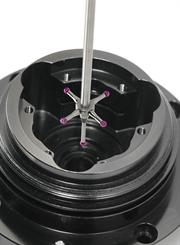In other words, if you need for example to confirm accuracy of the outside of a horizontal hole on your CMM, why would a head that rotates to horizontal position be more desirable than a simple probe head that does not angle, but with a tip that has horizontal capability ? Does it come down to depth possibilities or are there other reasons the angle head would be more desirable ?
And speaking of angle capable heads, why any angle other than 90 degrees ? To check hole tolerances of holes that are bored at an angle.....or other reasons ?
To put some definitive models out there, why would the Renishaw PH1 be more desirable than the TP-ES and why would the MIH be more desirable than either of those ?
http://www.helmel.com/Probe/ProbeHds.htm
And speaking of angle capable heads, why any angle other than 90 degrees ? To check hole tolerances of holes that are bored at an angle.....or other reasons ?
To put some definitive models out there, why would the Renishaw PH1 be more desirable than the TP-ES and why would the MIH be more desirable than either of those ?
http://www.helmel.com/Probe/ProbeHds.htm


